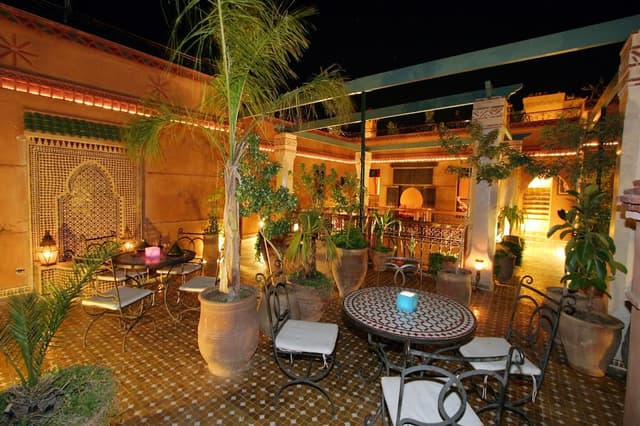Morocco: traditions and wild nature
Save for Later
Share
Morocco: traditions and wild nature
Clarissa Morello
Gateway to Africa, Morocco welcomes you with its profound diversity, between legendary mountain ranges, labyrinthine medinas and boundless deserts. If I were asked what I remember of my trip to Morocco I wouldn’t know how to answer in words but I will try to give here a description of the places I visited, the people, the wild nature that hosts mountains, hills, deserts, the sounds and noises, the aromas, spices and colors of this wonderful country.
Updated ago
Save
Share
Where to stay?
I recommend these Riads:
Riad Mogador

Riad Jnane Mogador
@ClarissaMorello
Add to
Details
Riad Tamarrakecht

Riad Tamarrakecht - Marrakech Medina
@ClarissaMorello
Add to
Details

Buy to unlock full guide
Access all the local insights and recommendations from @ClarissaMorello when you purchase this guide.
ABOUT THE AUTHOR
Clarissa Morello
Italy 📍
"Vast is the traveler's dwelling."
I've always loved traveling, discovering and visiting new places. I love getting in touch with new things and I enjoy sharing them with others. Diversity is a wealth, not a limit. I've visited wonderful places where uncontaminated nature takes your breath away like in Norway, Sweden or deserted places with golden sand like Morocco. Asian cultures, coral reefs that never cease to amaze. As a graduate in Cultural Heritage and Archaeology I have an immense love for art and the history of man and I also love the world of plants and my thesis in Archaeobotany confirms this. Man and the environment are connected entities and when man comes into contact with different environments his being changes forever. I hope I can also transmit the love for my land, Salento (Puglia, Italy) which is a land rich in traditions, good food, wonderful beaches and wild nature.
What's included
Digital Map
Fully interactive, digital map for finding places nearby
14 places
14 hand-picked places with notes from the creator
17 photos
Beautiful, hi-res photos from the creator
DESTINATION(S) COVERED
Morocco
FOCUSES AND THEMES
Couples
Groups
Halal
Vegan
Vegetarian
Family
Adventure
Architecture
Art
Boutique
Camping
History
Foodie
People & Culture
Photography
Road Trip
Slow Travel
Sustainable/Eco
Van Life
Wellness
Format
Guide
Guides typically include detailed information and how-to’s about a destination as well as suggested places to try.
COMMON QUESTIONS
What is Thatch?
Thatch is an online marketplace that provides instant access to thousands of vetted local experts and premium travel guides - making it the easiest and most affordable way to take high quality trips with less stress.
For travel creators (tastemakers, travel advisors, influencers and local experts) Thatch makes it easy to curate, publish, and sell digital travel guides, itineraries and personalized planning services.
What if I’m not satisfied with my purchase?
How do I access my purchased guides?
Can I access my guide offline?
How often are guides updated?
Can I request a personalized guide or itinerary?
Can I sell my own travel guides and itineraries?
Save for Later
Share